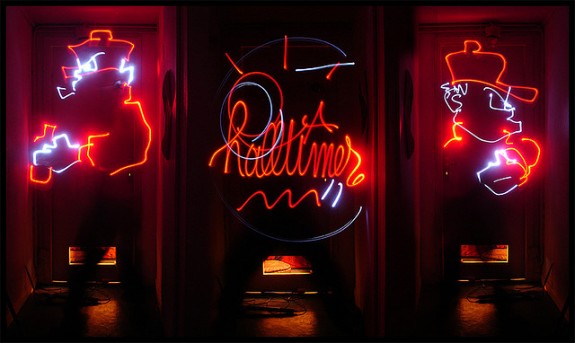First, a brief history: light painting — otherwise known as light graffiti or “that stuff that your photographer friends do that made you ask, ‘How did you do that?’” — has actually been around since the 1930s. Typically, a light is moved during a long exposure shot, creating a streak of color.
While Man Ray is credited for being a pioneer of light painting, Picasso (!) popularized the technique after being introduced to it by Gjon Mili, a photographer who shot pictures of ice skaters with lights attached to their legs.
Fast forward several decades, and now you have videos like the one above featuring Japanese b-boys Snack and Suke doing sets with lights attached all over their bodies.
Having the lights on the actual dancers themselves can yield interesting results (click here for more from Oregon-based Ben Canales), but there are also more conventional methods for marrying light painting and b-boying.
Below are examples of a French director and photographer using the stop motion technique of light writing to complement b-boys’ shapes and moves.
Houlk from Jerry Miller on Vimeo.
And hey, look. B-boys drawn in light painting form by Julien Avignon.
Yeah, France is killing it.
Related posts:
- World’s Most Dangerous Session Spot?
- Raging Phoenix: The Citizen Kane of B-Boy Martial Arts Movies
- B-Boy-Inspired Paintings
(c) More Than A Stance – Read entire story here.
